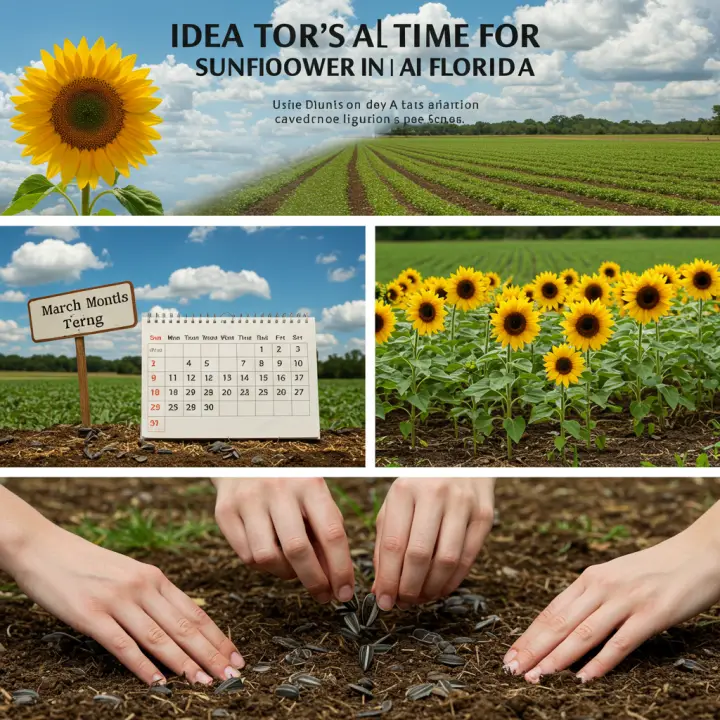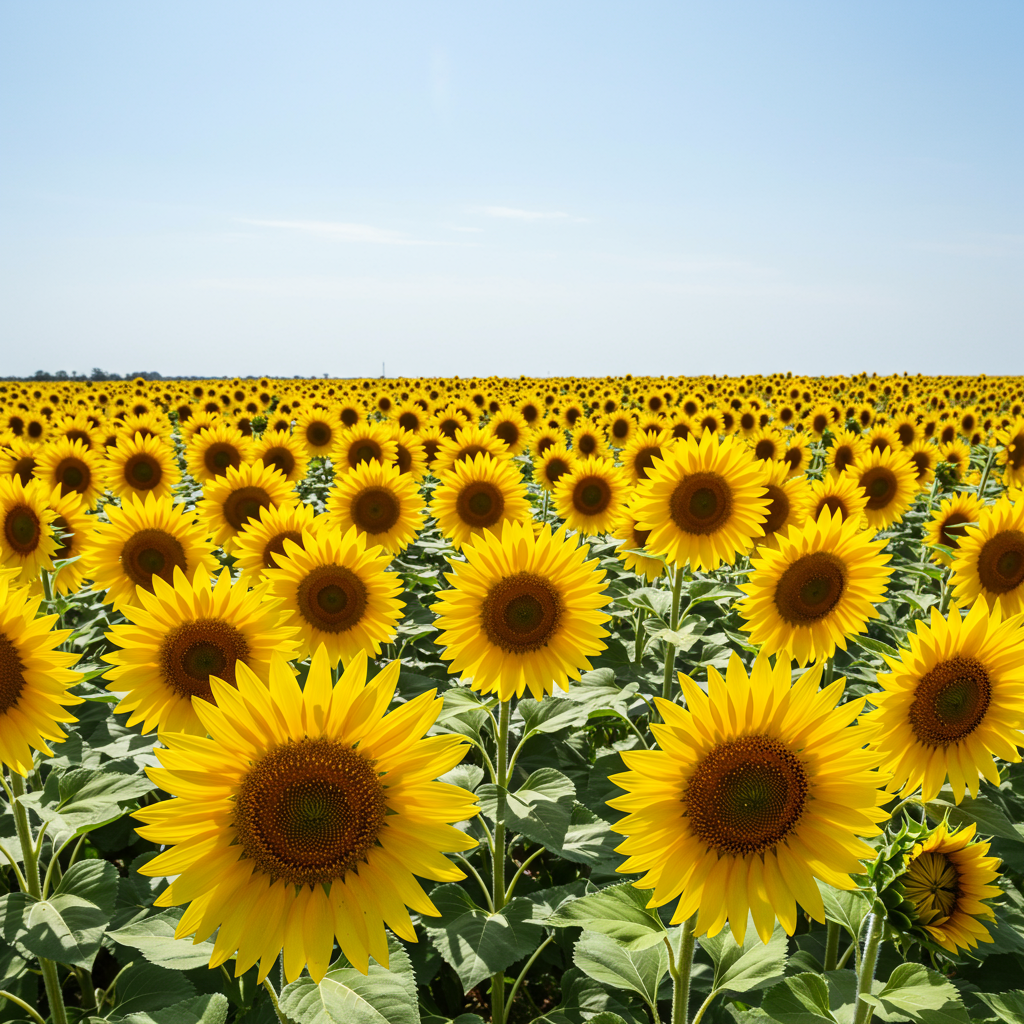This comprehensive guide explores the nuances of Florida sunflower planting, offering insights into the best times to sow seeds for a vibrant display, specific variety recommendations, and crucial care tips to ensure successful blooming in the Sunshine State’s unique climate.

Introduction: Bringing Sunshine to Your Florida Garden
Sunflowers, with their cheerful golden faces, are a welcome addition to any garden. While often associated with cooler climates, they can thrive in Florida with the right timing and care. This guide dives deep into the specifics of planting sunflowers in the Sunshine State, addressing the unique challenges and opportunities presented by Florida’s climate. From seed selection to pest control, we’ll cover everything you need to know to grow a dazzling sunflower patch.
When to Plant Sunflowers in Florida: Navigating the Sunshine State’s Seasons
Florida’s subtropical climate presents a unique set of considerations for sunflower planting. Unlike more temperate regions, Florida gardeners enjoy a longer growing season, but must also contend with intense heat and humidity.
Spring Planting: A Race Against the Heat
Planting in early spring (February-March) can be successful, allowing sunflowers to establish strong roots before the summer heat arrives. However, be prepared to provide supplemental watering to ensure consistent moisture. Choose early-blooming varieties for spring planting.
Fall Planting: A Second Chance for Sunflowers
Fall planting (September-October) is often preferred in Florida. The milder temperatures and reduced humidity create favorable conditions for sunflower growth. Fall planting can extend your sunflower season and provide a vibrant display well into winter.
Understanding Florida’s Microclimates
Florida’s diverse microclimates can influence planting times. North Florida experiences cooler winters compared to South Florida, requiring slightly adjusted planting schedules. Consult local gardening resources for specific recommendations based on your region.
Choosing the Right Sunflower Variety for Florida
Selecting the right sunflower variety plays a crucial role in successful Florida gardening.
Dwarf Varieties for Compact Spaces:
Dwarf sunflowers, typically reaching 2-4 feet, are excellent for smaller gardens, balconies, or containers. Popular dwarf varieties for Florida include ‘Suntastic Yellow’ and ‘Pacino Gold’.
Mammoth Sunflowers: Reaching for the Sky
If you have the space, mammoth sunflowers like ‘Mammoth Russian’ and ‘American Giant’ can provide an impressive spectacle, reaching heights of 10 feet or more. These giants require sturdy support structures.
Pollen-less Varieties for Cut Flowers:
For cut flower arrangements, consider pollen-less varieties like ‘ProCut Series’ or ‘Sunrich Orange’. These prevent pollen from staining surfaces and prolong the lifespan of cut blooms.
Sunflower Care Tips for Florida Gardeners
Soil Preparation: The Foundation for Success
Sunflowers prefer well-drained soil amended with compost or other organic matter. Incorporate organic matter into the soil before planting to improve drainage and provide essential nutrients.
Watering Wisdom: Balancing Moisture and Drainage
Consistent watering is crucial, especially during establishment and flowering. Avoid overwatering, which can lead to root rot. Water deeply at the base of the plant, allowing the soil to dry slightly between waterings.
Fertilizing: Boosting Growth and Bloom
While sunflowers are relatively low-maintenance, supplemental feeding can promote vigorous growth and abundant blooms. Use a balanced, slow-release fertilizer according to package directions.
Pest and Disease Management: Protecting Your Sunflowers
Common sunflower pests in Florida include aphids, whiteflies, and caterpillars. Monitor plants regularly and address infestations promptly. Use insecticidal soap or neem oil for organic pest control.
Supporting Tall Varieties: Preventing Toppling Over
Tall sunflower varieties require staking or other support structures to prevent them from toppling over in strong winds or heavy rain. Use bamboo stakes or other sturdy materials to provide adequate support.
FAQs: Addressing Common Sunflower Growing Questions
Q: Can I grow sunflowers in pots in Florida?
A: Yes, dwarf varieties are well-suited for container gardening in Florida. Choose a large pot (at least 15 gallons) and ensure adequate drainage.
Q: What can I do to prevent birds from eating my sunflower seeds?
A: Protect developing seed heads by covering them with netting or cheesecloth.
Q: How long does it take for sunflowers to bloom in Florida?
A: Depending on the variety and planting time, sunflowers typically bloom 70-100 days after sowing seeds.
Q: When is the best time to harvest sunflower seeds?
A: Harvest sunflower seeds when the back of the flower head turns brown and dry. The seeds should be plump and easily removed.
Q: Can I save sunflower seeds to plant next year?
A: Yes, you can save seeds from your sunflowers. Allow the flower heads to dry completely, then remove the seeds and store them in a cool, dry place until the next planting season.
Conclusion: Reaping the Rewards of Florida Sunflower Growing
Growing sunflowers in Florida may require some adjustments to accommodate the state’s unique climate, but the rewards are well worth the effort. By following these guidelines, you can enjoy a vibrant display of these cheerful blooms, brightening your garden and bringing a touch of sunshine to your landscape. From choosing the right variety to implementing proper care techniques, successful sunflower growing in Florida is within reach for any gardener. Embrace the challenge and enjoy the process of cultivating these magnificent flowers.

